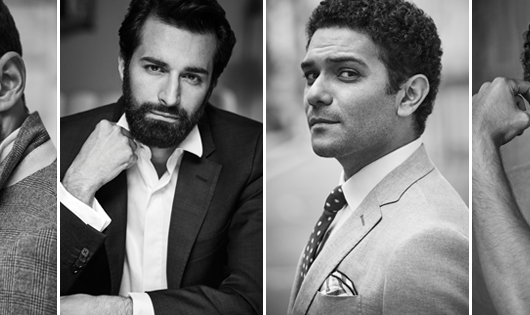The Building Blocks Of An Enticing Brand Experience: Q&A With Mars’ Daniele Calderoni
The key for effective brand management is creating a positive and memorable brand experience for customers.A Brand experience is the ecosystem that exists around a brand or product, manifested in the sensations, feelings, cognitions, and behavioral responses evoked by a brand. The Brandberries interviewed Daniele Calderoni, Regional Brand and Portfolio Director of MARS, to get his take on the how-tos of creating an enticing brand experience.
BB: There is a general understanding that brand experience is all about appealing to human emotions to create a connection to drive customer behavior. In your opinion, what is brand experience all about?
 DC: I agree that brand experience is about the positive emotions a brand evokes, but it’s not just that. Ultimately, there are three moments where an individual interacts with a brand: 1) ‘advertising’, which generates awareness of a brand or a specific product; 2) the so called ‘first moment of truth’ (FMOT), which is the first interaction a consumer has with a brand (when he or she gets in contact with the brand/product in a retail environment or online); 3) the so called ‘second moment of truth’ (SMOT), which is when the consumer uses the product and hence can decide whether it met expectations or not. Brand experience is the journey across these three steps and of course emotions play a big role in each of them.
DC: I agree that brand experience is about the positive emotions a brand evokes, but it’s not just that. Ultimately, there are three moments where an individual interacts with a brand: 1) ‘advertising’, which generates awareness of a brand or a specific product; 2) the so called ‘first moment of truth’ (FMOT), which is the first interaction a consumer has with a brand (when he or she gets in contact with the brand/product in a retail environment or online); 3) the so called ‘second moment of truth’ (SMOT), which is when the consumer uses the product and hence can decide whether it met expectations or not. Brand experience is the journey across these three steps and of course emotions play a big role in each of them.
BB: What makes a brand experience ‘connect’ with customers? How important is consistency and relevance in crafting experience strategies?
DC: Depending on the type of brand or product we’re talking about, I believe there are two broad spaces to truly connect with consumers: inspiration and relevance.
In some industries like fashion, beauty care, and automotive, brands try to connect with potential customers by inspiring consumers with a unique way of expressing their personality (fashion) or their unique way of delivering a benefit (a certain look in the beauty care space or a certain car style to go from A to B in automotive). In these industries, inspiration drives brands purchase intent and hence brand experience.
In other industries (where inspiration is a less important purchase driver), the perfect brand experience is driven by relevance: the more a brand is relevant to a specific consumption occasion, the more the brand will be considered by consumers who are looking for that experience. For example, with M&Ms we focus a lot on associating the brand globally to ‘screen time’ (either watching a movie in a cinema, at home on TV, on your tablet or phone), because M&Ms is the most relevant bitesize proposition to deliver on the grazing experience that consumers want to have while watching a movie.
Whatever the approach a brand takes, what is important is to be consistent over time: inspiration and consumption occasions can be built only over time (years) and thinking about getting results immediately just after a 1-2 months campaign is unfortunately only a dream.
BB: Can brand experience make or break a brand? What does an unpleasant brand experience cost a brand?
DC: An enticing and unique brand experience makes a brand grow and thrive. But most importantly, it makes a brand stretch its equity upwards, which can allow the brand to demand a higher price premium vs less differentiated brands. In other words, not all successful brands have a unique brand experience, but if they don’t, they usually win by being competitive in price. In the long term though, brands that are only competitive in price face higher risks of seeing their margins squeezed by further competition, while brands with a unique brand experience have a more sustainable competitive advantage.
On the contrary, a poor brand experience can be very costly for a brand as it would lose one of the most important assets: reputation. And rebuilding reputation is often very challenging, even with a lot of advertising and promotions.
BB: Are brand experiences measurable? Can you mention some of the proven to be successful methodologies to measure the impact of a brand experience?
DC: It’s difficult to measure the impact of a positive brand experience on someone’s purchase decisions, but in the industry (especially in FMCG) there are ways to test the three building blocks that make a positive brand experience: quantitative tests on advertising, packaging (FMOT) and after-use tests (SMOT) are usually the best way to get a feeling on whether the proposition will be successful or not. None of the existing tests will be very precise, but by benchmarking vs a database of other propositions in the same industry, they allow marketers to fine-tune the concept and make sure that consumers will enjoy the best possible brand experience.
BB: One of the key attributes of a brand is product packaging. How can packaging help in building a memorable brand experience?
DC: In some industries like FMCG, packaging is fundamental. If you go shopping for a dress, a car or a jewel, what you can see and touch in the retail space is the product itself and in many cases you can even try it. In these instances, packaging is something that makes the experience richer (everyone likes to bring home a watch in a nice box), but it’s not a key purchase driver. In other industries, like FMCG, packaging is everything you can see of a product (you can’t open packs in a supermarket), so it’s often the only way to make the consumer understand and trust a brand without actually trying the product at the moment of purchase. And that’s why packaging is fundamental to stand out on shelf, communicate the benefits that the brand is selling and drive the design cues that make that brand unique.
BB: One of the crucial touchpoints where consumers experience a brand is the retail brand experience. How can brand marketers design the next big retail experience?
DC: Experiential marketing is one of the buzzwords of the moment and it means engaging the consumers as much as possible in the desired brand experience. The best way to do that is by owning or controlling the retail space: that’s why luxury brands are so meticulous in designing their retail environments – their stores (on and offline) need to be the place where consumers can get the best brand experience. But where brands can’t control their retail space (like in in FMCG), brands can still influence consumers purchase decisions by partnering with retailers to make the shopping experience more engaging. For examples, at Mars in the Middle East we partnered with a retailer to develop what we call the ‘chocolate factory’, an immersive retail experience that breaks the ‘autopilot’ approach most shoppers have in a store and that makes shopping for chocolate more fun and much more engaging. This project was very successful because it helped drive category growth, as it resulted in a benefit for the shopper (who enjoys a better experience), for the retailer (with higher category turnover) and for all the chocolate manufacturers (as they can display their products in a more appealing way).
BB: Can you name three brands that you believe are hallmarks in experience strategies?
DC: It’s difficult to choose, but I’ll vote for 3 brands that play in different industries:
1) SKII – A high end skin care brand (distributed in Asia and very selectively in Europe) with a unique selling story and with very enticing displays in store;
2) Apple – As their ability to leverage design and retail space is still un-paralleled globally;
3) M&Ms – I worked on several consumer brands in my career, but M&Ms is by far the most iconic. It’s the biggest chocolate brand in the world and it’s one of the very few FMCG brands that has become a ‘lifestyle brand’ and that has such a rich and unique eco-system that make it go far beyond the usual retail space (go visit the M&Ms World stores in London or New York and you’ll understand what I mean…).





